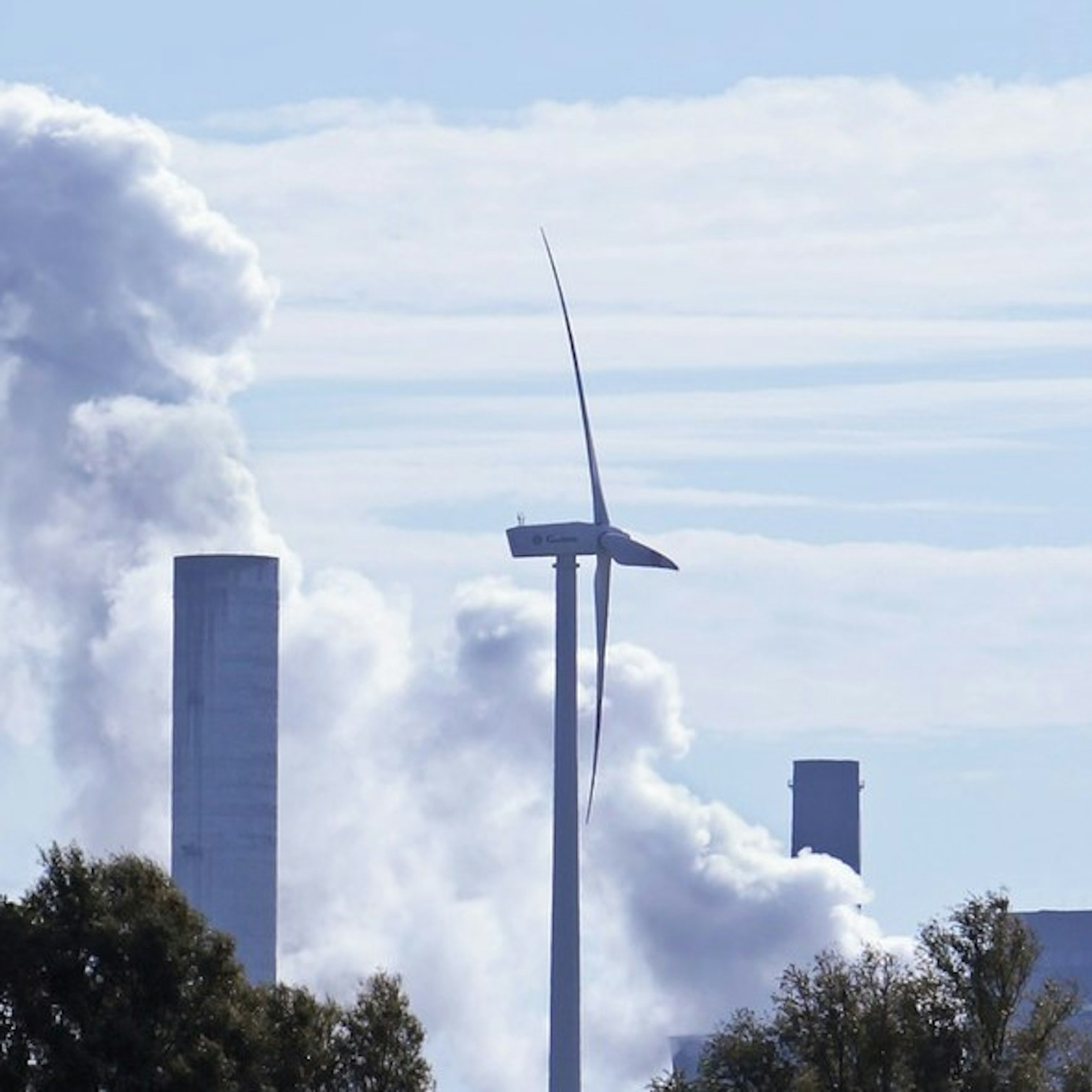- Solar energy blog
- Why some industries are yet to embrace the energy transition (and how can they make the shift to renewables)
Why some industries are yet to embrace the energy transition (and how can they make the shift to renewables)


Laura Rodríguez
Business developer
Laura is a renewable and software industry sales professional, currently working at RatedPower as Sales Overlay in North America & Territory Manager Oceania. With a background in International Business and International Trade, Laura previously worked in the business strategy area in various companies as well as as a market analyst for the Government of Spain in Australia.

Content
The energy transition is gathering pace, with countries around the world setting increasingly ambitious targets to reduce their carbon emissions. Some industries are successfully taking up green approaches to their business and work practices. However, other industries have been slower to embrace change.
Let’s look at some of the obstacles some industries are facing. What are the factors holding them back? And what can they learn from industries that are making the switch?
Aviation grapples with fuel consumption
The aviation industry is one of the world's largest carbon emitters and it is set to remain for the foreseeable future. Aviation accounts for approximately 2.8% of the global carbon emissions that are produced by human activity, a report from the International Energy Agency (IEA) notes.
Commercial passenger flight activity increased by 5% annually between 2000 and 2020, with carbon emissions rising by 2% annually. The pace of increase in emissions lagged the growth in flights as airlines adopted efficiency measures.
In the short term, the industry is focused on incremental change, reducing the weight of aerodynamic drag of aircraft to make them more fuel-efficient. But those measures still result in rising emissions – a long way from the net-zero ambitions taking hold around the world.

There are several reasons it is especially difficult for the airline industry to decarbonize:
Growing demand for air travel
Competition between airlines
Cost of investing in new aircraft designs
High fuel consumption
Lack of government incentives
By 2045, international air traffic is projected to increase by 3.3 times from 2015 levels, increasing fuel consumption by 2.2-3.1 times, according to the International Civil Aviation Organization (ICAO).
What can the industry do to address its growing contribution to climate change?
The future of green airports and travel will likely depend on the development of a sustainable hydrogen infrastructure, as hydrogen provides the type of lightweight, energy-dense fuel needed to power aircraft over long flights.
French aircraft manufacturer Airbus has developed concepts for hydrogen-powered commercial planes that could enter service in 2035.
For hydrogen aircraft to become commercially viable, airports will need to install hydrogen transport and refueling infrastructure. This will require support from governments to finance research and technology, digitalization, and mechanisms, Airbus said.
Oil and gas majors cling to fossil fuel production
The oil and gas industry is a long way from embracing the energy transition. While the industry is investing around $1 billion in renewables each year, companies would need to invest twenty times that much to meet their renewable targets. And even then, spending would be well below what they continue to invest in oil, according to research firm Rystad Energy.
Some of the major European companies are moving to diversify their investments in wind and solar, electric vehicle infrastructure, and carbon capture, utilization, and storage (CCUS), but US companies by and large continue to focus on fossil fuels.

US-based Exxon Mobil has committed to invest $3 billion in carbon capture investments by 2025 – which is a fraction of its total capital expenditure plan of between $96 billion and $119 billion. But UK-based BP initiated a new strategy in 2020 to become an “integrated energy company”, aiming to increase its investment in low-carbon energy tenfold to $5 billion by 2030, while cutting its oil production by 40%.
That said, even among European companies, planned investments in the green transition remain well below their investments in oil and gas exploration and drilling.
However, the impact of the COVID-19 pandemic in reducing energy demand and the resulting carbon emissions is increasing the importance of environmental, social, and governance (ESG) themes among investors and consumers. This is having an influence on the investment strategies of the oil and gas companies and prompting the oilfield services industry to embrace the energy transition, a report by consulting firm EY found. This shift will likely accelerate in the coming years as the wind, CCUS, and hydrogen sectors grow.
Energy-intensive industries face high transition costs
Industries that consume large amounts of fossil fuels, such as iron and steel, chemicals, refining and cement production, encounter challenges in reducing their carbon footprint. They account for around 30% of all greenhouse gas emissions, ahead of the transportation sector.
There are solutions available that industries can adopt to cut their consumption, including energy efficiency, electrification, biofuels, hydrogen, CCUS, and circular economy strategies. But these approaches require a high level of upfront investment and higher operational costs, which discourages uptake.
Energy-intensive industries have long investment cycles, making it difficult to implement change. Industries are looking to green hydrogen to play a key role in the transition, but the infrastructure is several years off.
Industries striving towards green practices
While there are challenges to shifting to a low-carbon investment strategy, there are industries that have embraced the need for change, such as automotive and big technology.
Responding to disruption from a new generation of electric vehicle (EV) manufacturers like US-based Tesla, or BYD in China, the big automotive manufacturers have accelerated their plans to produce electric vehicles and cut their carbon emissions.

In the technology sector, the likes of Amazon, Apple, Facebook, Google, and Microsoft consume large volumes of energy. They are facing increasing socio-political pressure to reduce their carbon footprint and are responding by securing renewable energy supply deals.
Apple, which has operated its facilities on 100% renewable energy since 2018, said in March that more than 110 of its manufacturing partners around the world are shifting to a 100% renewable energy supply for the production of products for Apple. This has resulted in nearly 8GW of generation capacity coming online. In addition, Apple is building one of the largest battery projects in the US, with a capacity of 240MWh.
Earlier this year, Amazon began testing electric delivery vans in Los Angeles and plans to roll them out to another 15 cities in 2021, after purchasing 100,000 vehicles from EV startups Rivian in 2020. It has installed thousands of charging stations at its delivery points across North America and Europe.
Optimize your green energy project with Rated Power
Energy-intensive industries, along with the aviation and fossil fuel sectors, have yet to fully embrace the green transition. While there are challenges to reducing carbon emissions in industries with heavy fuel requirements, there are ways businesses can embrace clean energy. And that’s by investing in clean energy and adopting renewable electricity sources to power their operations.
If your company is investing in solar power, RatedPower can help to optimize the planning process for the most efficient installation. Take a product tour now.
Latest stories
Related posts
Technology and engineering
Innovation in renewable energy: Developments expected in 2025
We look at the 10 biggest renewable industry developments that are making a green future possible, including perovskite solar cells, green hydrogen, and more.
Updated 18 MAR, 25

Market analysis
Breaking down solar farm costs: Free template inside
Updated 27 SEP, 21

Market analysis
Solar energy in Australia: a 2021 market analysis
Updated 11 MAY, 21

- RatedPower
- Solar energy blog
- Why some industries are yet to embrace the energy transition (and how can they make the shift to renewables)
